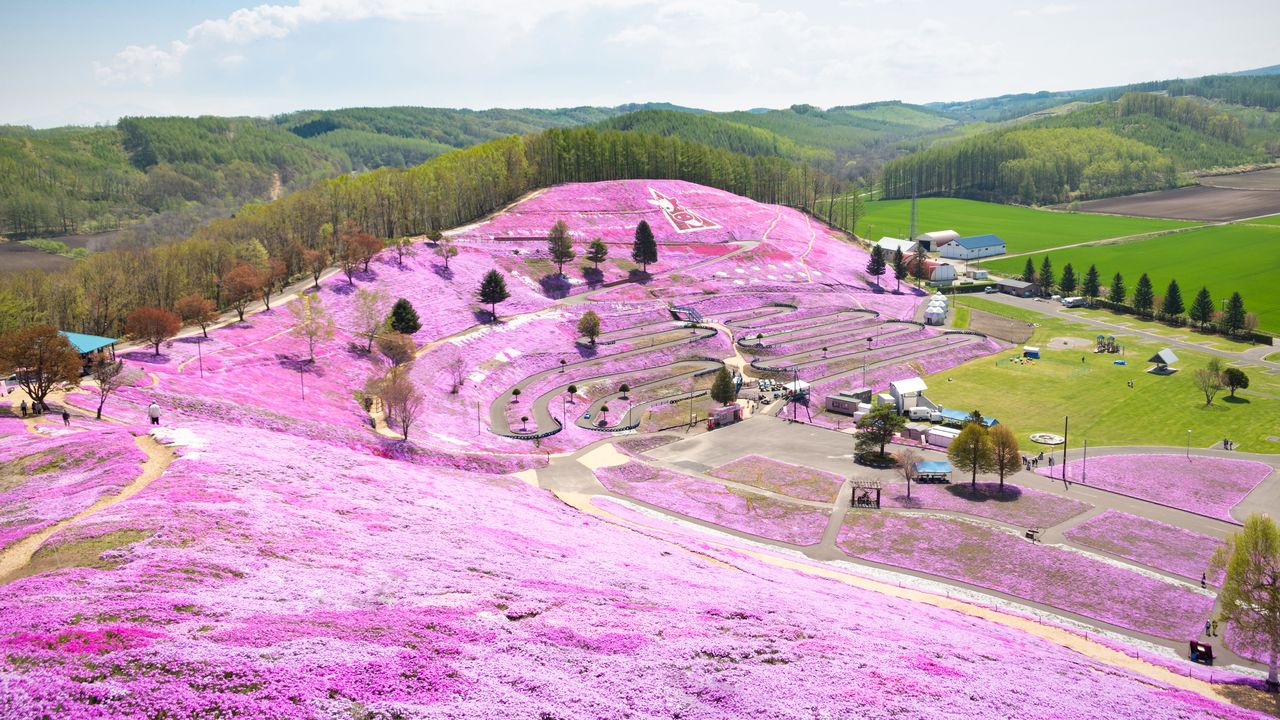
Higashimokoto Shibazakura Park: A Flowery Oasis in Northeastern Hokkaidō
Guideto Japan
Travel- English
- 日本語
- 简体字
- 繁體字
- Français
- Español
- العربية
- Русский
Sky of Blue, Hill of Pink
The town of Ōzora is home to Memanbetsu Airport, which is where many tourists to the area of Hokkaidō along the Okhotsk Sea coast in the island’s northeast begin their visits. Tourists flock in large numbers to the town’s lush natural terrain, ranging from the southern shoreline of Lake Abashiri to Mount Mokoto in the south of the town. The area is especially popular in the spring, when mizubashō (Asian skunk cabbage) blooms in Memanbetsu along the shore of Lake Abashiri and shibazakura (pink moss phlox) covers the slopes of Higashimokoto Shibazakura Park some 20 kilometers to the southeast of the lake.
Higashimokoto Shibazakura Park covers some 10 hectares in the plain to the north of Mount Mokoto. The entire park turns a vivid pink annually from May to early June. The park’s Shibazakura Festival takes place at this time, with a variety of events for visitors to enjoy, including local cuisine, go-carts, a fishing pond, and various stage performances. Attendees will find something to entertain them no matter how late they stay.
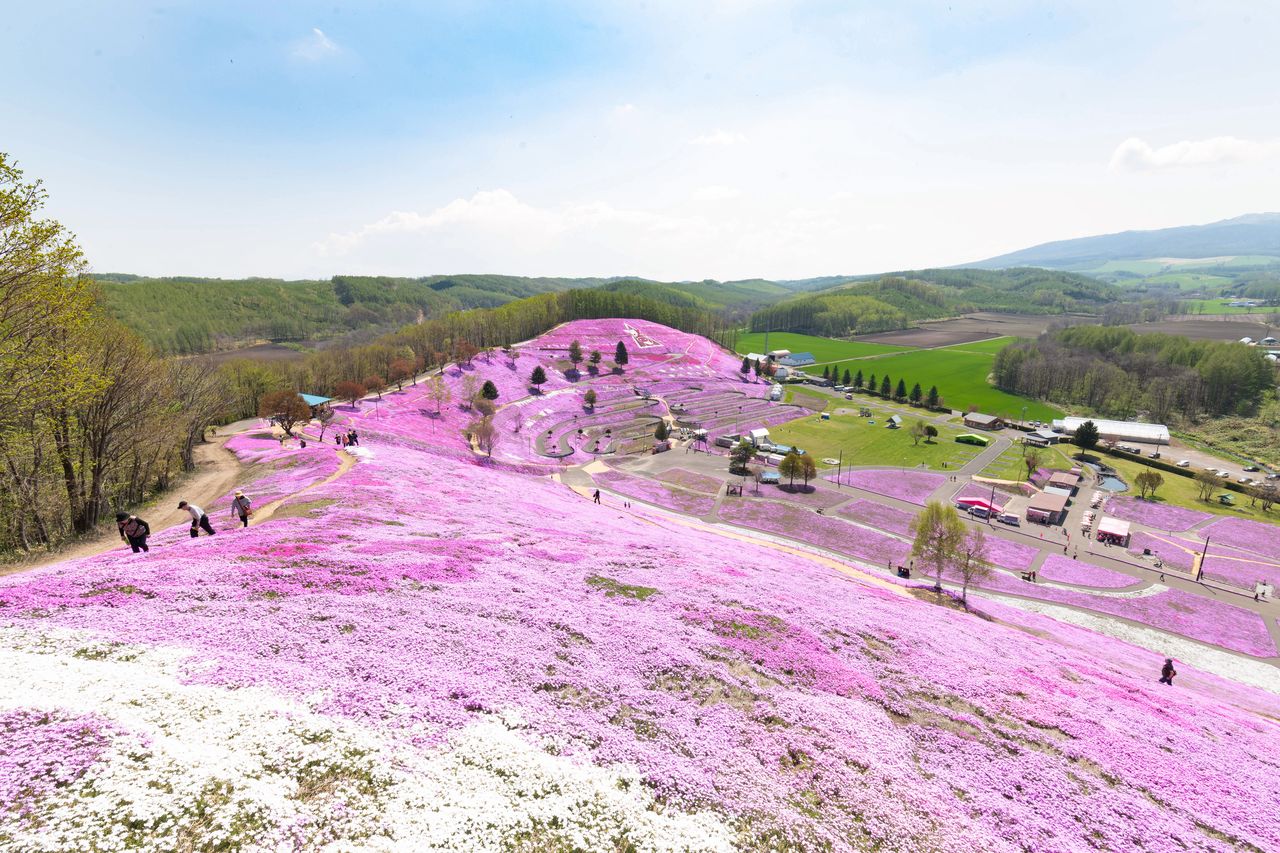
Looking down on Higashimokoto Shibazakura Park from the observation deck.
Moss phlox is a perennial belonging to polemoniaceae, the phlox family. Its Japanese name, shibazakura, describes how its five-petaled flowers, similar in appearance to sakura (cherry blossoms), cover the ground like shiba (grass). Some of these flowers have a different number of petals, and these are thought to bring good luck to those who find them, rather like superstitions about four-leaf clovers.
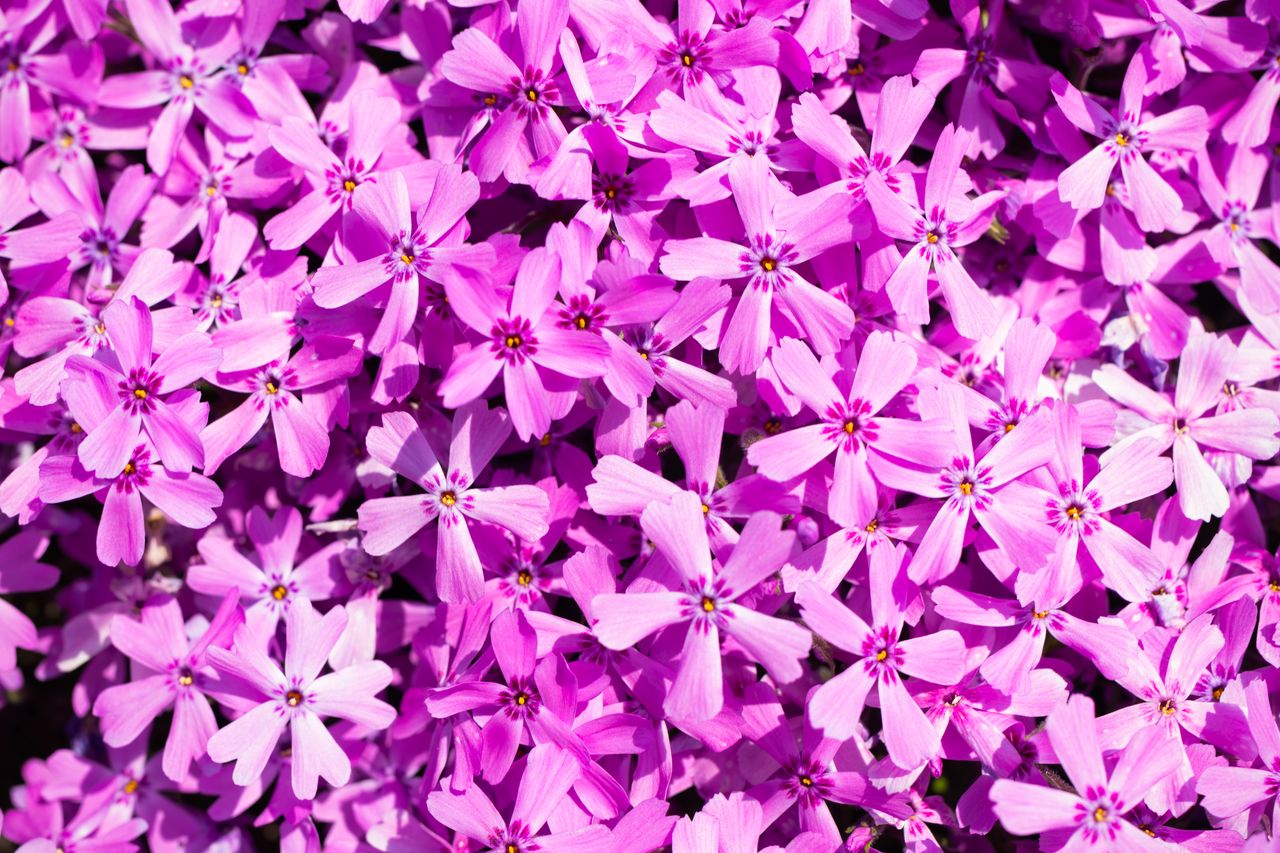
The moss phlox flowers are pink with subtle touches of purple.
These flowers do not grow here naturally; rather, this expansive plot of moss phlox was created through the labors of one man, a lifelong native of the area named Nakahachi Suekichi. In the postwar era, his sister brought some moss phlox from a nearby town, and he took to cultivating it in his home. From these humble beginnings, he is said to have produced a flowerbed covering 100 square meters over the following decades. Impressed by this accomplishment, a public corporation entrusted with the management of the Mount Mokoto Hot Springs asked Nakahachi to use moss phlox to create a rest and recreation site for townspeople and hot spring patrons alike. In 1977, Nakahachi went to work for the organization, taking carts full of moss phlox cuttings from his home and single-handedly redeveloping a low hill in the area. The hill’s slopes were too steep to allow motorized help, meaning that almost all of the work had to be done by hand. It took him eight years to turn the entire hill pink.
Thereafter, Nakahachi continued tending the land until his retirement in 1999. The original gardener died in 2009, but three-member teams continue caring for the park’s plants by hand to this day, as the use of pesticides and other agricultural chemicals is prohibited.
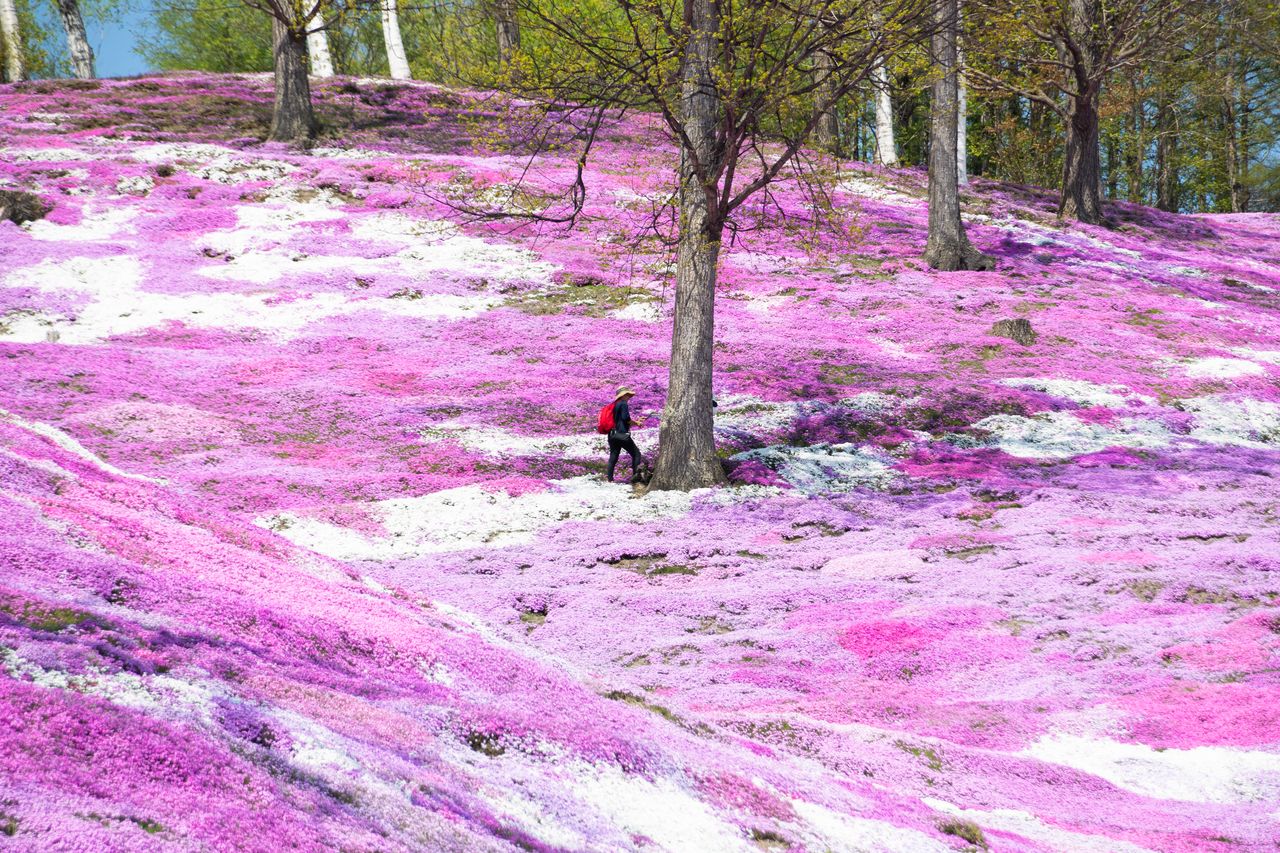
The varying hues of the flowers are part of the attraction of the park.
Playing and Eating in Sight of Flowers
The moss phlox covering the hill is lovely when seen from below, but a climb to the observation deck or the arbor to view the field from above is definitely recommended. There is a pink torii on the long staircase up to the deck, which is a popular place for souvenir photos. Those without the stamina to tackle the stairs can take a trail with a more gradual incline, as well as a tram running between the base of the hill and the arbor.
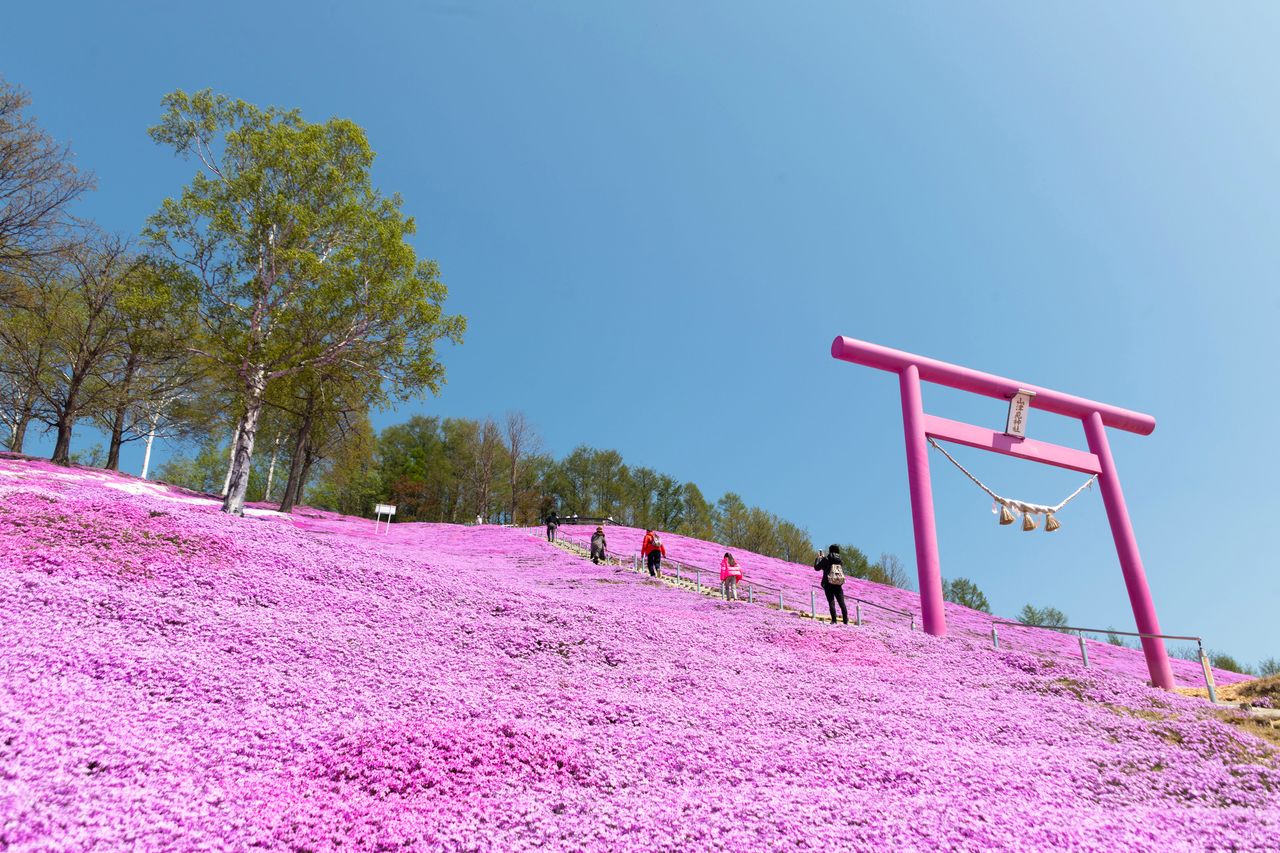
The stairs to the observation deck are marked by this distinctive pink torii.
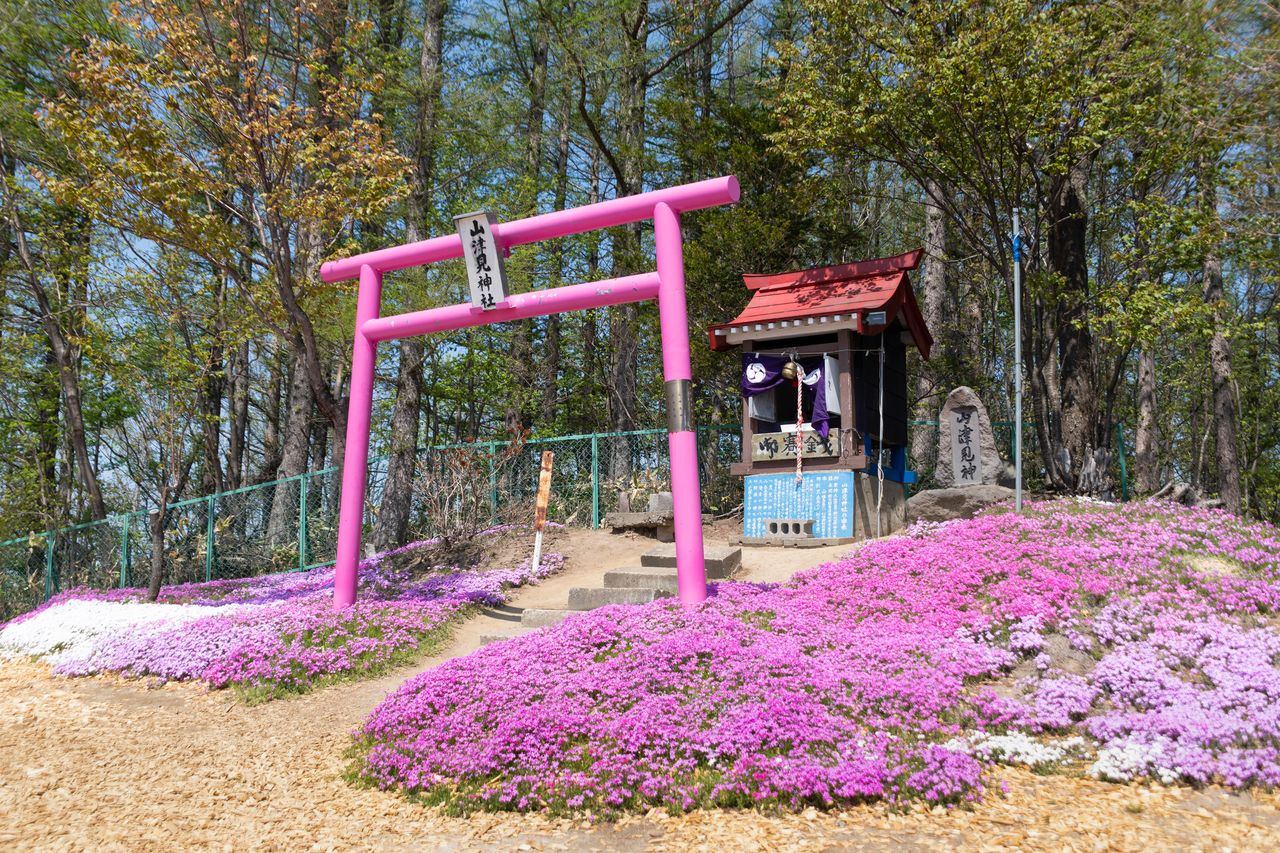
Dedicated to the Shintō deities of the mountain, Yamatsumi Shrine stands further up the slope beyond the observation deck, and sports another pink torii.
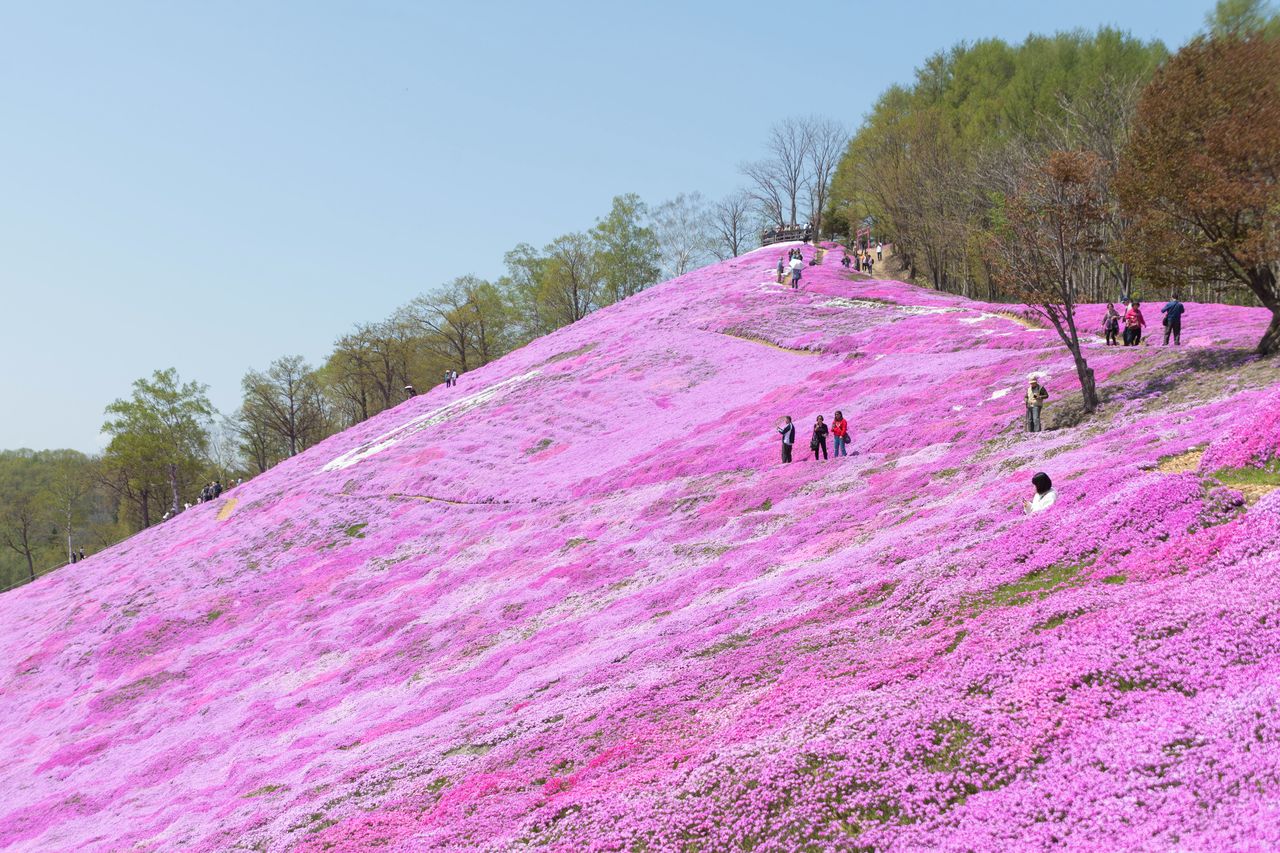
The observation deck and shrine are both visible at upper right.
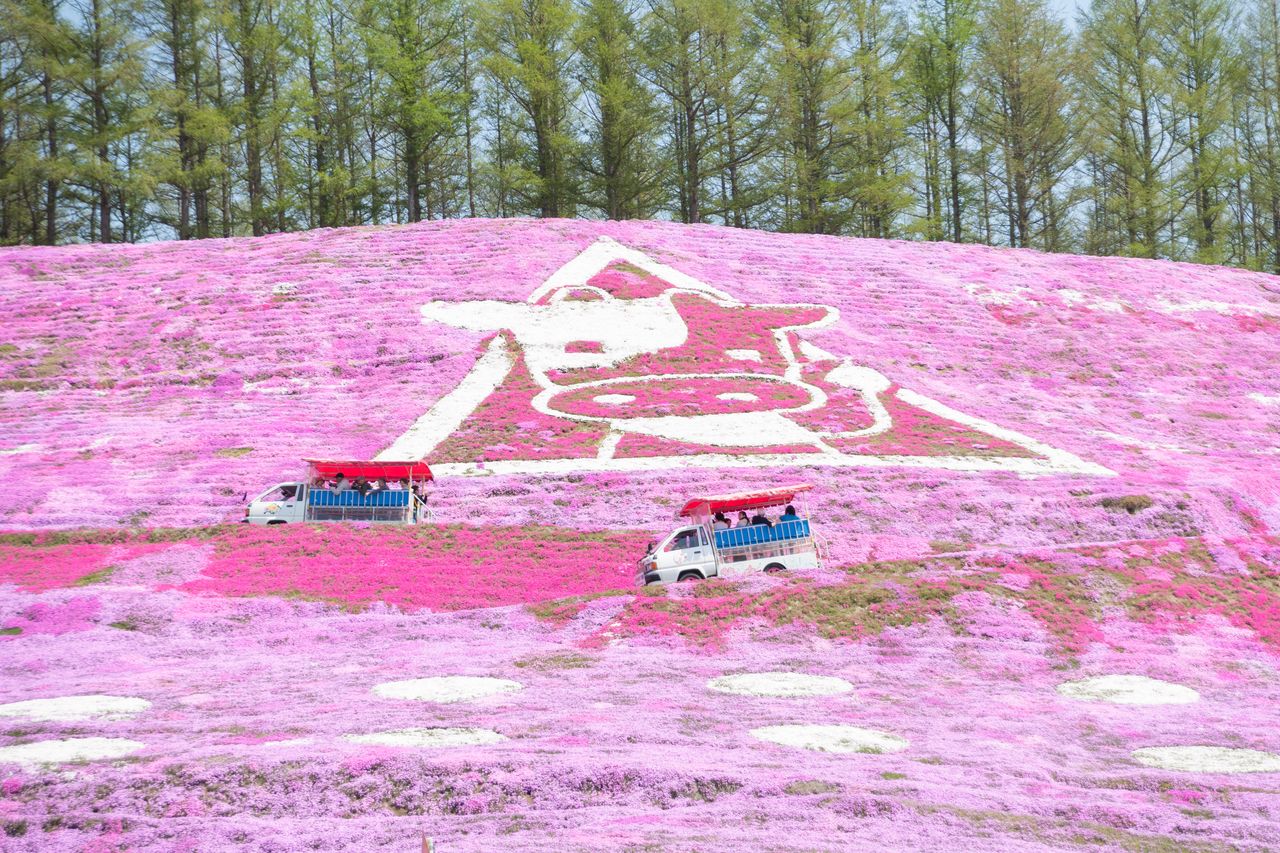
Park tram fares are ¥300 for adults and ¥150 for elementary-school students. The cow image depicted on the slope is “Nonky,” a character created for the former village of Higashimokoto and its booming dairy industry.
After making the rounds of the park, visitors can enjoy go-cart racing on a track bounded by these pink flowers, dropping lines in the fishing pond for big rainbow trout, and gazing at the moss phlox on the hill while dipping their toes in the footbaths in the hot spring area.
The cafeteria and gift shop offer foods made with locally produced vegetables and dairy products, the most popular of which is pink shibazakura ice cream made with fresh milk from local dairies.
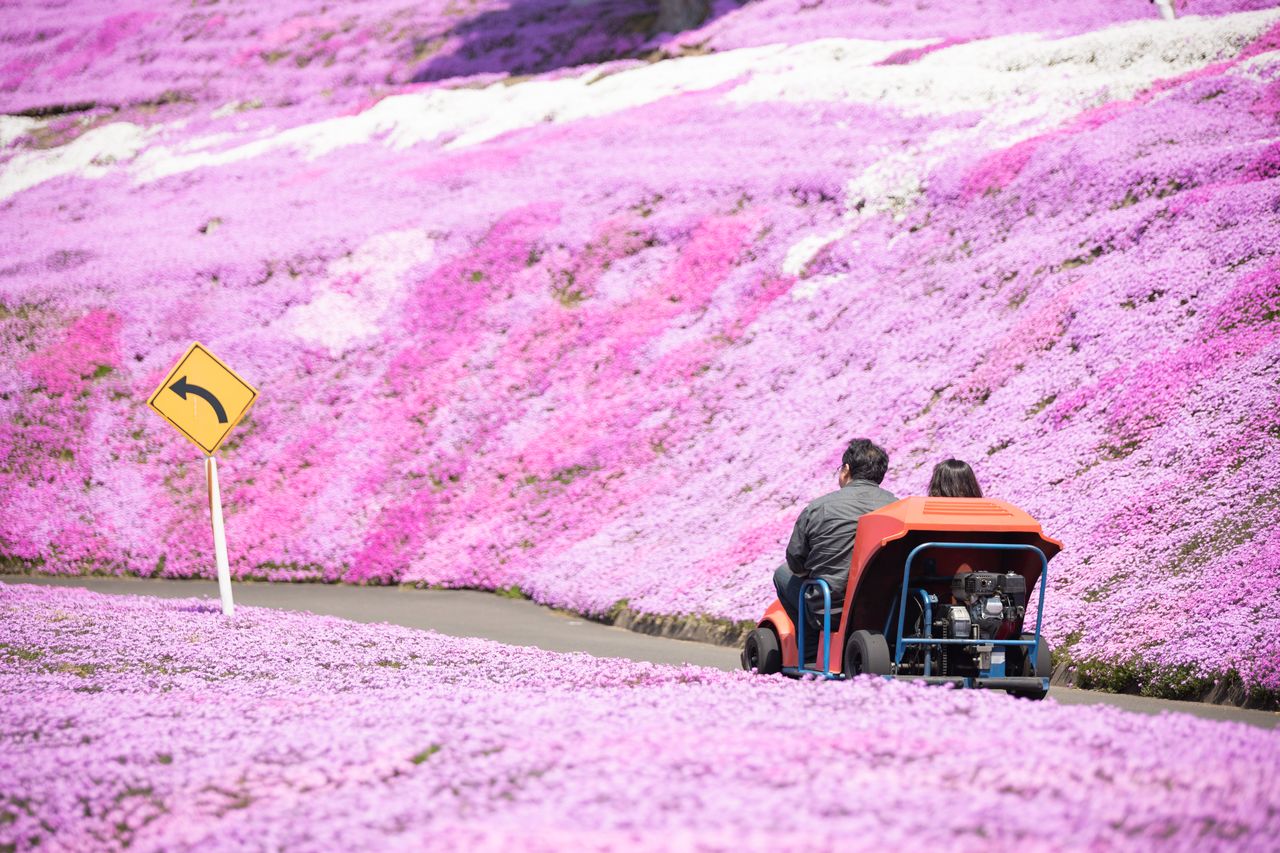
Visitors can drive go-carts through vistas of pink.
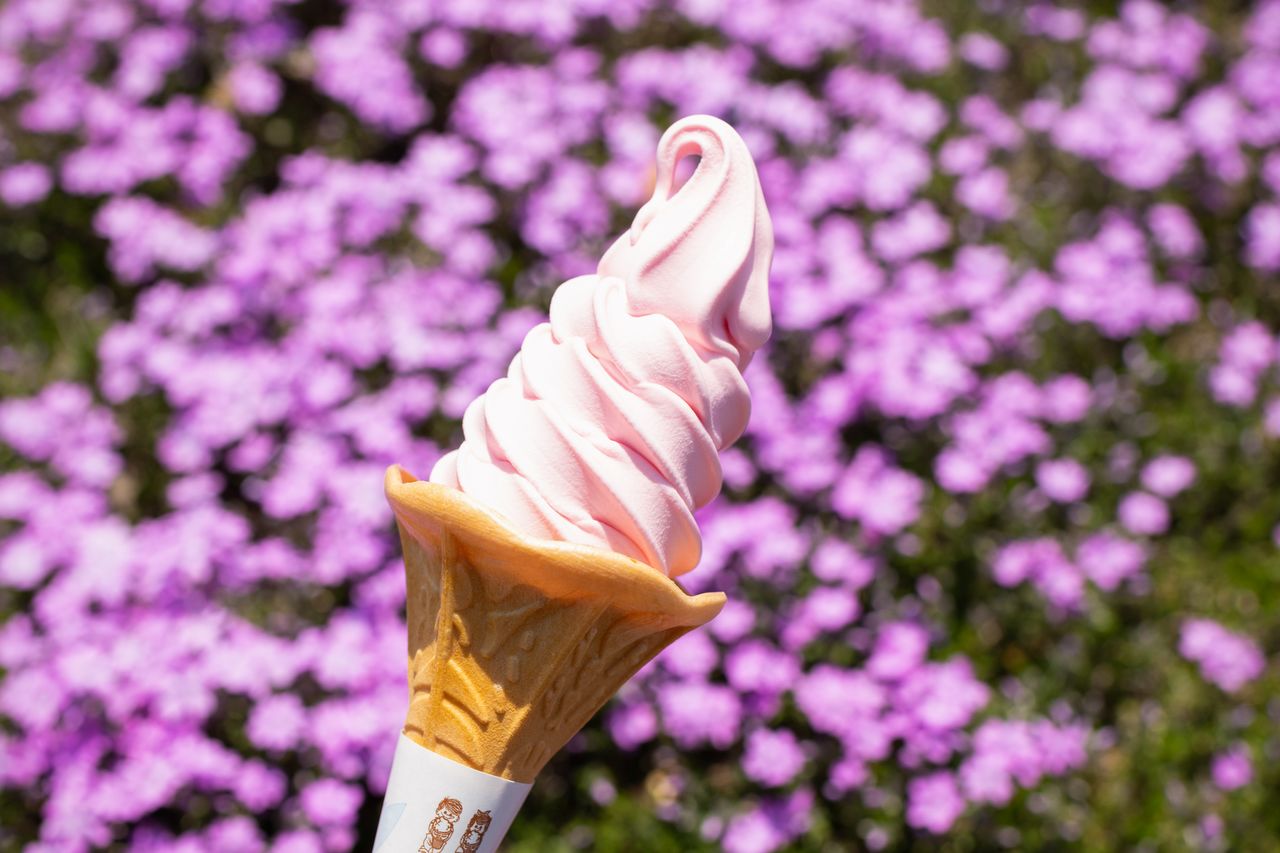
The shibazakura ice cream looks as refreshing as it tastes.
Higashimokoto Shibazakura Park
- Address: 393 Suehiro, Higashimokoto, Ōzora, Hokkaidō
- Shibazakura Festival Dates: May 3 to June 2, 2019
- Hours: 11:00 am to 6:00 pm (admissions closed at 5:00 pm)
- Admission: ¥500 adults, ¥250 elementary-school students
- Access: Approx. 30 min. drive from either JR Sekihoku Main Line Memanbetsu Station or Memanbetsu Airport
Nearby Attraction: Higashimokoto Nyūrakukan
Located a short drive from Shibazakura Park in the direction of Memanbetsu Airport, Higashimokoto Nyūrakukan showcases the history and production methods of the Higashimokoto dairy industry. There are dioramas depicting old-fashioned cheesemaking methods and a video presentation about Higashimokoto, as well as opportunities to observe the actual making of a variety of cheese.
The gift shop and sampling area offer milk, cheese, and other products made right there in Higashimokoto. Also popular is a soft ice cream flavored with rich Camembert cheese.
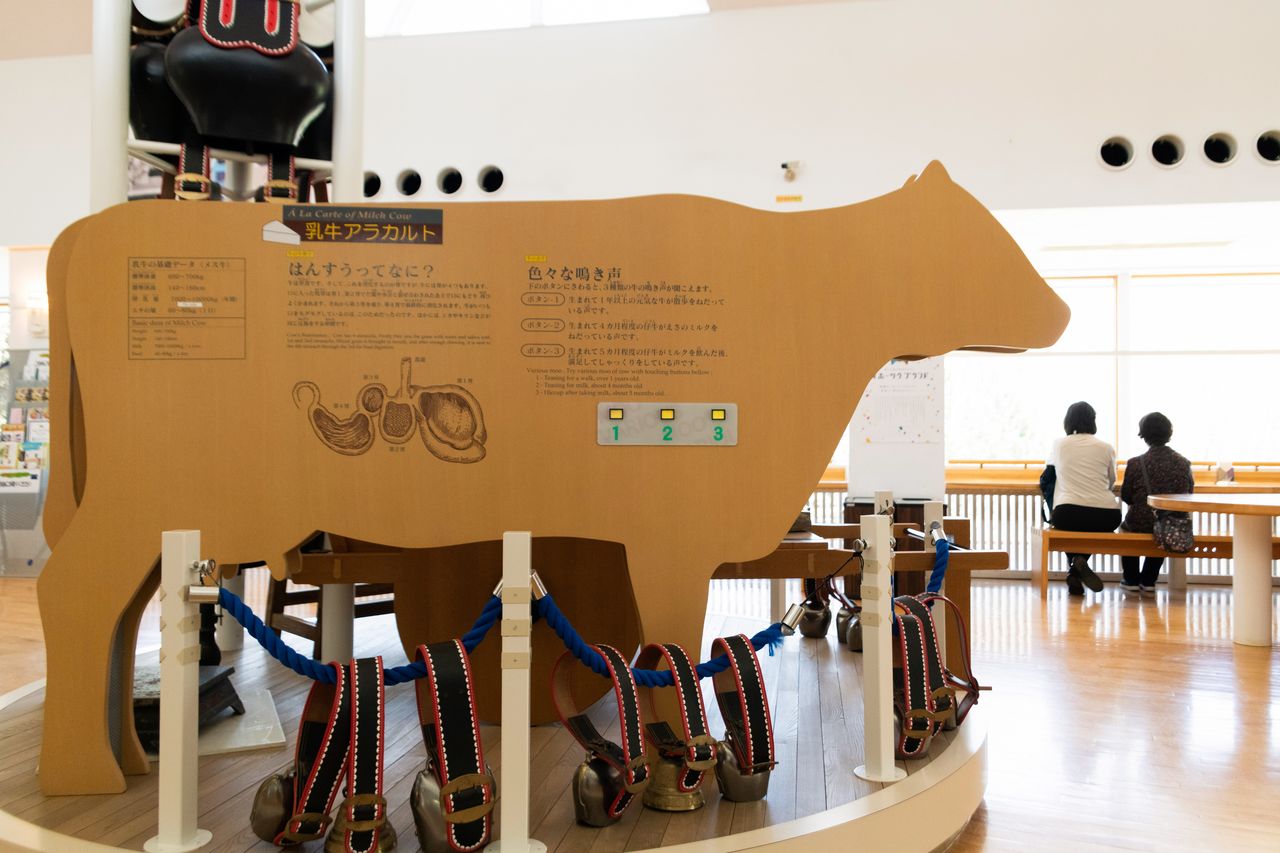
A life-size panel in the shape of a dairy cow presents basic information about these animals while playing recordings of their sounds.

A life-size panel in the shape of a dairy cow presents basic information about these animals while playing recordings of their sounds.
Higashimokoto Nyūrakukan
- Address: 409-1 Higashimokoto, Ōzora, Hokkaidō
- Closed: Mondays from May to October, Mondays and Tuesdays from November -to April
- Hours: 9:00 am to 5:30 pm
- Admission: Free for observation; admission fees and reservations required for use of practical experience rooms.
- Access: Approx. 20 min. drive from either JR Sekihoku Main Line Memanbetsu Station or Memanbetsu Airport
(Originally published in Japanese. Reporting, text, and photos by Laufen Katsu.)